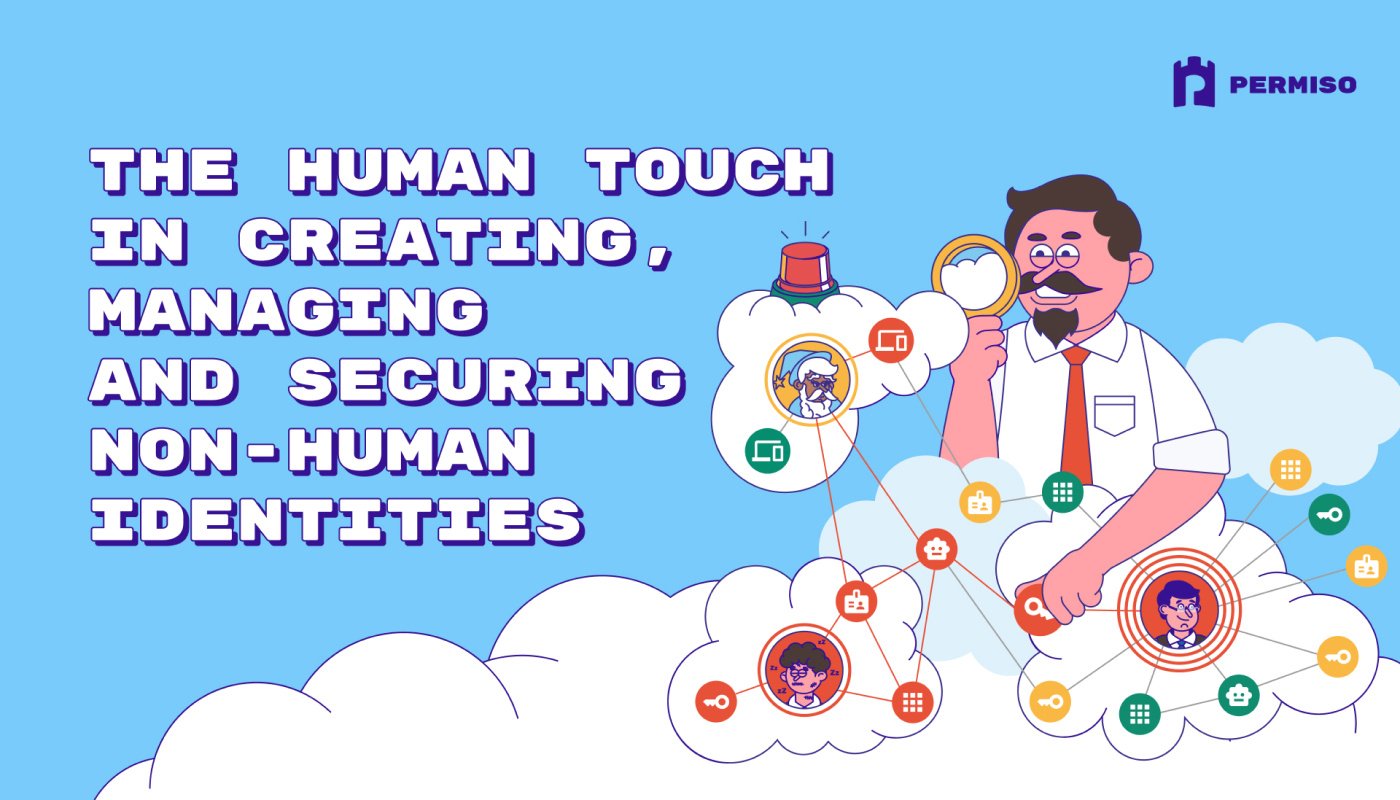
Visibility + Context + Continuous Assessment = Effective Identity Security Posture Management (ISPM)

Hear Ye, Hear Ye
Subscribe to Cloud Chronicles for the latest in cloud security!
Modern security teams aren’t short on tools; they’re short on clarity. Identity lives across IdPs, cloud accounts, SaaS apps, data stores, CI/CD, and secrets vaults. Each system emits alerts, but few explain which identities can reach what and how risky that access is right now.
Identity Security Posture Management (ISPM) fixes that by continuously mapping identities and permissions, adding context (business criticality, blast radius, exploitability), and enforcing guardrails that keep posture healthy as things change.
This piece lays out what ISPM is (and isn’t), the three pillars that make it work, concrete examples, and how to implement it without boiling the ocean.
What ISPM Is (and Isn’t)
ISPM focuses on the posture of identities and entitlements: how accounts are created, what they can do, where they can go, and whether that aligns with least privilege and business policy. It monitors human and non‑human identities (service accounts, workloads, OAuth apps, service principals, API keys), along with their permissions and effective access paths.
-
ISPM vs. ITDR: ISPM is preventative/continuous posture governance (identity hygiene, configuration, toxic combos). Identity Threat Detection and Response (ITDR) is the detective/response side (detecting misuse, lateral movement, session hijack, token theft). They complement each other; many programs start with ISPM to reduce the attack surface, then layer ITDR to catch active abuse.
-
Not vulnerability management: ISPM is not about patching CVEs on servers. It’s about who/what can access which resources and how privileges can escalate, and which access paths matter most.
So how does ISPM deliver on this goal of reducing identity risk? It comes down to three core pillars that work together to give security teams both a clear map and a way to act on it: visibility, context, and continuous assessment.
The Three Pillars: Identity Edition
1) Visibility: Build the Identity Graph
You can’t protect what you can’t see. The first pillar of effective ISPM is visibility, and it starts with an uncomfortable truth: most organizations cannot accurately answer "who has access to what?" The average enterprise maintains identities across multiple identity providers, cloud platforms, SaaS applications, and on-premises systems. Each creates its own identity silos, and traditional approaches to identity governance weren't designed for this complexity.
True visibility requires constructing what we call a Universal Identity Graph, a living map that connects every identity to its permissions and the resources those permissions can reach. This isn't a simple user list. It's a multi-dimensional view that captures:
- Direct and inherited permissions: An engineer might have minimal direct permissions but inherit administrative access through nested group memberships three levels deep. Your identity graph must traverse these chains to understand effective permissions.
- Cross-platform access paths: A compromised AWS IAM user might be able to assume roles in other accounts, access Kubernetes clusters, or trigger CI/CD pipelines that deploy to production. Visibility means mapping these trust relationships across platform boundaries.
- Temporal and conditional access: Many permissions aren't permanent. Just-in-time access, break-glass accounts, and privileged access management systems grant temporary elevations. Your visibility must capture both standing and potential permissions.
What good looks like: a living map of human and non-human identities, their effective permissions, trust boundaries (tenants/subscriptions/accounts), and reachable data paths.
2) Context: Rank by Business Impact & Blast Radius
Raw visibility creates a new challenge: too much data. Knowing you have thousands of identities with hundreds of thousands of permissions does not show you where to act. Context is what turns visibility into priorities.
In practice, ISPM does this by enriching raw permission data with business and security insights that explain why an identity matters, how much damage it could cause if compromised, whether it is being used appropriately, and how it aligns with current attacker techniques. This analysis can be grouped into four critical lenses:
-
Business criticality: Classify identities and resources by their importance to operations, compliance, and data sensitivity. This requires input from security, IT, and business teams.
-
Blast radius: Assess what a compromise would enable, including resources an identity touches, privilege escalation paths, sensitive data exposure, and lateral movement potential.
-
Usage patterns: Spot unused permissions through log and API analysis. Stale access is both a risk and a chance to tighten least privilege.
-
Threat intelligence: Map new attack techniques such as OAuth abuse or service principal exploits to your environment so vulnerable identities are flagged immediately.
By layering context over raw visibility, ISPM shifts teams from drowning in permissions data to acting on the access risks that matter most.
3) Continuous Assessment: Guardrails, Not One‑Off Audits
The third pillar of ISPM is continuous assessment. Unlike point-in-time audits, continuous assessment keeps identity posture healthy as environments change. Employees join and leave, projects launch, permissions pile up, and new integrations appear almost daily. Without ongoing evaluation, even strong visibility and context quickly lose relevance.
Continuous assessment works across different timescales and automation levels. Real-time monitoring flags high-risk changes such as new administrative grants, disabled MFA policies, or unusual permission combinations. These triggers can launch immediate responses, from alerts to automated fixes.
Policy guardrails translate identity security requirements into rules that are always enforced, such as:
-
All administrative accounts must use phishing-resistant MFA
-
Service accounts cannot have interactive login capabilities
-
Production access must be approved and expire after 8 hours
-
OAuth applications requesting sensitive scopes require security review
When violations occur, automated workflows apply the right response. Excessive permissions granted to a developer can be corrected automatically. A service account with an aging API key can be rotated without human intervention. An executive account missing MFA can be escalated directly to security response.
The real value of continuous assessment is efficiency. By automating routine hygiene checks, ISPM frees security teams to focus on investigating complex threats and responding to attacks, rather than constantly chasing down preventable misconfigurations.
The Combined Power of Visibility, Context, and Assessment
The three pillars of ISPM: visibility, context, and continuous assessment, are not standalone practices. Their real strength comes from how they reinforce one another. When combined, they create a feedback loop that makes identity risk not only measurable but also manageable at scale.

Visibility without context leaves you overwhelmed by raw data. You can see every permission, but you do not know which ones actually matter.
Context without visibility risks blind spots. You may prioritize certain identities, but if the map is incomplete, critical paths will go unnoticed.
Assessment without both reduces to compliance checklists. You may enforce some rules, but without an accurate graph and prioritization, guardrails miss the real risks.
When integrated, the pillars work like this:
-
Visibility builds the identity graph, mapping who has access to what.
-
Context ranks the nodes on that graph, highlighting the identities and paths that could cause the most damage.
-
Continuous assessment applies policy guardrails, ensuring those risks are reduced in real time as the environment evolves.
The result is more than hygiene. It is a proactive, adaptive system that closes the loop between knowing, prioritizing, and acting. With ISPM, security teams stop chasing alerts across fragmented tools and instead maintain a living model of identity risk that updates as fast as the infrastructure changes.
This combined power turns identity from a source of constant surprises into a control plane that can be trusted.
Why Posture Alone Isn’t Enough Without Identity Context
Posture management on its own can feel deceptively complete. Security teams can point to dashboards showing that controls are in place, policies are written, and entitlements are cataloged. But posture without identity context is like having a map with no scale or landmarks. It shows you something, but it does not tell you what truly matters.
This blind spot is not just about external attackers. Without identity context, organizations also miss signs of insider risk, where legitimate access is abused in subtle but damaging ways.
Identity context answers questions that configuration checks cannot:
-
Which accounts matter most? An admin for a low-risk SaaS tool is not the same as an admin for a production database.
-
What can an attacker really do? Effective access paths, privilege escalation routes, and lateral movement potential define the true blast radius.
-
How are permissions being used? Dormant, stale, or rarely used permissions often represent silent risks waiting to be exploited.
-
How do new threats apply? Mapping attacker techniques like OAuth consent abuse or token theft directly to affected identities closes the gap between compliance and real-world risk.
When identity context is layered on top of posture, organizations move from box-checking to actual risk reduction. Without identity context, posture is static; with it, posture becomes dynamic and aligned with both business priorities and attacker realities.
Getting Started with ISPM
Implementing Identity Security Posture Management does not have to mean boiling the ocean. The most effective programs start small and grow in layers.
-
Start with Visibility
Begin by mapping your identities, entitlements, and trust relationships into a universal identity graph. Even a partial view quickly surfaces blind spots like dormant accounts, over-privileged service identities, or toxic permission chains. -
Layer in Context
Once you have visibility, enrich it with business and threat context. Rank identities by criticality, usage, and blast radius so teams know where to act first instead of drowning in raw permission data. -
Move to Continuous Guardrails
With visibility and context in place, shift from one-off fixes to continuous enforcement. Define guardrails such as requiring MFA on admins, prohibiting standing production access, or removing stale service accounts. Automate responses to violations so posture stays healthy as the environment changes.
By following this path, organizations create a living model of identity risk that matures over time. ISPM is not a point-in-time project. It is a discipline that scales with the business and adapts as attackers evolve.
At Permiso, we help security teams gain visibility into identities, permissions, and attack paths across cloud and SaaS environments, turning posture management into real risk reduction. If you want to see how Permiso Identity Security Platform can strengthen your cloud defenses or explore how our Identity Threat Detection & Response (ITDR) complements ISPM, reach out for a demo today.



.png)





.png?width=767&name=Looking%20at%20AI%20Security%20Through%20the%20Identity%20Lens%20(1).png)

